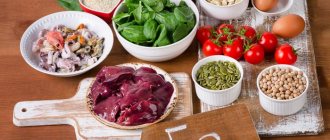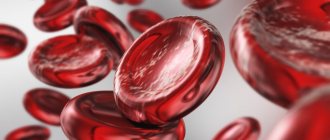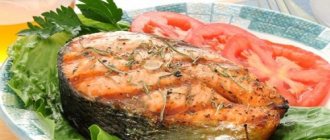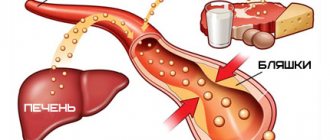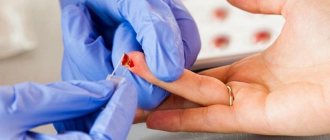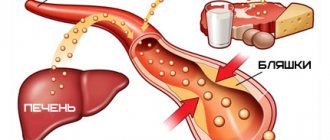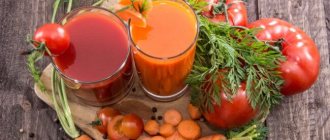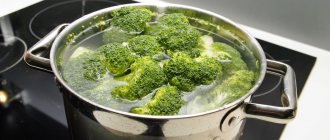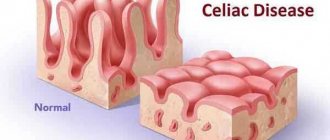The problem with cholesterol levels is one of the most common in the medical field. The diet of modern man and the peculiarities of the rhythm of his life contribute to the accumulation of this substance, which is characterized on the negative side.
But is cholesterol really that dangerous? What products contain it a lot? Should their consumption be limited? We will understand today’s material through a detailed consideration of the nature of cholesterol and the characteristics of its effect on the human body.
Why is high cholesterol harmful?
Today, cholesterol is considered the main cause of one of the most common diseases of our time - atherosclerosis. Most doctors and ordinary people are convinced that cholesterol is the terrible substance that causes hundreds of thousands of people around the world to die every year. But is this really so?
It turns out that there are several theories to explain the formation of sclerotic plaques on artery walls. Moreover, in some of them cholesterol does not play the main role...
For example, many scientists believe that atherosclerosis occurs not so much due to excess cholesterol in the blood, but due to a violation of lipid metabolism in the human body. Cholesterol plaques, in their opinion, may well be just a consequence of such a disorder.
Moreover, despite the existence of different opinions on this matter, all experts agree on one thing: the risk of heart attack and stroke directly depends on the level of cholesterol in the blood. Therefore, it is vital to understand which factors have the greatest impact on the level of cholesterol in a person’s blood.
Modern medicine identifies the following factors:
- smoking
- physical activity
- culinary preferences and water consumption regime
- body mass
- the presence of various diseases such as diabetes, hypothyroidism, alcoholism, etc.
How to lower blood cholesterol levels? Very simple! You just need to not smoke, not drink alcohol, not suffer from terrible diseases, lead an active lifestyle, watch your own weight, drink more water and eat right.
Isn't it simple? All that remains is to find the strength to do all this, and also figure out what to eat if you have high cholesterol. But first, let's get acquainted with the norms for cholesterol levels in human blood...
Which meat has more cholesterol?
It is important for meat lovers to know how much cholesterol it contains and which meat contains the most low-density lipoproteins. The chemical composition of meat is as follows: protein - up to 22%, water - up to 72%, unsaturated fats - up to 48%.
It is unsaturated fats that affect blood cholesterol levels. But meat varies in the content of high-density or low-density cholesterol, so you need to determine which meat has a higher concentration. Thus, the most bad cholesterol is found in fatty beef and pork. While rabbit and chicken are considered dietary meat, they contain the least amount of lipoproteins.
There is cholesterol in beef, or more precisely, in the pulp, but there is not much of it. Low-density lipoproteins are found in large quantities in beef fat and offal. It is believed that the richest product in lipoproteins is beef brains.
The content of unhealthy fats in beef is as follows:
- beef brains – 3100 mg;
- beef liver – 400 mg;
- beef tongue – 87 mg;
- pulp – 80 mg.
People with high levels of LDL in the blood and diagnosed atherosclerosis can only eat boiled or stewed beef or steamed cutlets. It is strictly forbidden to serve them meat fried in oil. Unlike beef, pork is fattier. Nevertheless, due to the fact that it contains less refractory fat, the digestibility of pork is slightly better.
It is recommended to choose leaner meat, and excess fat should be trimmed before cooking. Pork dishes are best stewed, baked or boiled. Fried pork will not benefit the body. Meat that is cooked in hot oil contains an excessive amount of harmful substances.
Although pork is not one of the leading products in terms of low-density lipoprotein content, nevertheless, such an organic compound is present in it in significant quantities:
- pork brains – 2000 mg;
- pork kidneys – 300 mg;
- pork liver – 130 mg;
- pulp – 80 mg;
- pork tongue – 50 mg.
People suffering from atherosclerosis should include pork in their diet no more than once a week.
Compared to beef and pork, lamb contains 2.5 times less LDL. 100 g of this product contains 97 mg of cholesterol. The same amount of lamb contains 9 g of unprotected fatty acids. This meat should also be consumed in moderation, avoiding frying. Among the types of cattle meat, horse meat contains the least cholesterol - 68 mg per 100 g.
As for rabbit, its meat is considered one of the most dietary products of animal origin with low cholesterol content. Per 100 g of this product there are 123 mg of low-density lipoproteins. But this is not “bad” cholesterol. The least amount of lipoproteins is found in chicken meat, the fats of which are unsaturated and therefore do not increase the risk of developing atherosclerosis. This is why white chicken meat can be eaten if you have high cholesterol.
Chicken skin contains the most bad cholesterol, so it must be removed before cooking. LDL levels can be affected by chicken by-products, so patients with atherosclerosis should limit or eliminate their consumption. Chicken meat contains lipoproteins in the following quantities:
- skinless fillet – 35 mg;
- red meat – 89 mg;
- chicken heart – 170 mg;
- chicken liver – 492 mg.
Meat is the main source of lipoproteins harmful to the body.
Offal and sausages are especially harmful. They should be completely excluded from the diet.
Blood cholesterol levels
The level of cholesterol in a person's blood is considered normal if it falls within the range of 70 to 190 mg/dL (1.8-5 mmol/L). Anything that goes beyond these limits requires, at a minimum, a thorough consultation with a doctor, and, at a maximum, immediate adoption of measures to reduce blood cholesterol by influencing the factors mentioned above.
The same applies to situations where the proportion of high-density lipoproteins (HDL) is less than 20% of the total amount of cholesterol in the body.
And now we bring to your attention a list of foods that contain large amounts of cholesterol.
General description of the diet
The goal of a diet for high cholesterol is to reduce the level of “bad” cholesterol, prevent the development of pathology of the cardiovascular system, normalize the functioning of the kidneys and liver, activate metabolic processes and improve blood circulation.
The diet should meet the principle of mechanical sparing, which has a beneficial effect not only on the digestive system, but also on the cardiovascular system.
The diet for high cholesterol levels corresponds to the treatment table according to Pevzner No. 10 and No. 10C.
The treatment plan for high cholesterol includes limiting salt and fats (mainly of animal origin).
Table characteristics (per day):
- energy value is 2190 – 2570 kcal;
- proteins – 90 g, of which 55 – 60% are of animal origin;
- fats 70 – 80 gr., of which at least 30 gr. vegetable;
- carbohydrates no more than 300 g. for people with increased weight, and for people with normal body weight 350 g.
Foods containing cholesterol
As you understand, it is not possible to list all the food products that contain cholesterol, because there are hundreds and even thousands of them (according to the types of living creatures used for food). Therefore, we propose to highlight several of the most popular food groups that contain cholesterol...
Products containing cholesterol (Table 1)
| Product | Cholesterol content (mg/100 g) |
| Cholesterol in meat and offal | |
| Pig meat (pig meat) | 40 |
| Pork | 60-70 |
| Beef and veal | 70-100 |
| Mutton | 70 |
| horsemeat | 50-60 |
| Rabbit meat (rabbit meat) | 40 |
| Brain | 770-2300 |
| Beef by-products (liver, kidneys, heart) | 140-300 |
| Pork by-products (liver, kidneys, heart) | 120-200 |
| Boiled sausage (Doctorskaya, Milk) | 50 |
| Pork sausages | 70 |
| Sausages | 50 |
| Cholesterol in eggs and poultry | |
| Chicken | 40-80 |
| Goose | 100-110 |
| Duck | 40-60 |
| Turkey | 130-210 |
| Chicken (broiler) | 60-70 |
| Chicken egg | 570 |
| Quail egg | 600 |
| Egg yolk | 1000-1100 |
| Cholesterol in fish and seafood | |
| Fatty fish (halibut, carp, capelin, pink salmon, salmon, mackerel, herring, sturgeon, herring, sprat, eel) | 45-140 |
| Lean fish (tuna, perch, pike, crucian carp, pike perch, blue whiting, smelt) | 40-70 |
| Fish caviar | 250-450 |
| Squid meat | 85 |
| Mussels | 40 |
| Oysters | 50 |
| Crabs, crayfish, shrimp | 90-210 |
| Octopuses | 50 |
| Cholesterol in animal fats | |
| Butter (depending on fat content) | 140-190 |
| Pork, beef fat | 100-120 |
| Fish fat | 570 |
| Chicken fat | 95 |
| Cholesterol in dairy products | |
| Cheese, including processed cheese (depending on fat content) | 50-120 |
| Sour cream (10-30% fat content) | 30-140 |
| Cream (10-35% fat) | 30-140 |
| Milk, kefir, yogurt | to 10 |
| Condensed milk | 30-40 |
| Cottage cheese (2-18% fat) | 7-60 |
| Glazed cheese curds | 10-60 |
Please note that the amount of cholesterol in food products depends mainly on their fat content. The higher the fat content, the more cholesterol, and vice versa.
On top of that, you may have already noticed that Table 1 contains only animal products. The reason for this “discrimination” is simple - animal products contain cholesterol, but plant products do not.
However, it should be borne in mind that cholesterol in the blood increases not only from foods rich in cholesterol. Its amount in the body also increases because certain types of substances (toxins, free radicals, etc.) damage the tissues and arteries of the body, thereby stimulating increased cholesterol synthesis in the human liver. In this regard, we recommend eating less trans fats, which are contained in most margarines, in foods fried in oil, sausages and industrial baked goods (especially cookies), and also try to reduce the proportion of fried, high-protein and other foods in your diet. which contain elements harmful to the body.
On the other hand, on the contrary, among animal products there are those that help remove cholesterol from the body. The same applies to plant products, most of which are quite effective and quickly reduce cholesterol in human blood.
Basic principles of the diet
Diet
Small meals, 5 times a day. This allows you to reduce food portions and suppresses hunger between meals.
Temperature
The food temperature is normal, there are no restrictions.
Salt
The amount of table salt is limited to 3 - 5 grams, food is prepared unsalted, and if necessary, add salt at the table. Salt causes fluid retention in the body, which increases the load on the cardiovascular system.
Liquid
Drinking free fluid up to 1.5 liters (unloads the cardiovascular and urinary systems).
Alcohol
Alcohol should be avoided, especially strong alcoholic drinks. But doctors recommend (in the absence of contraindications) to take 50–70 ml of natural red wine at night, which contains flavonoids that have antioxidant properties (thus, dry red wine protects the walls of blood vessels from the formation of atherosclerotic plaques). In addition, a strict smoking ban is imposed.
Weight
People with obesity and overweight need to normalize their weight. Excess fat in the body is an additional source of “bad” cholesterol, and also complicates the functioning of the heart and blood vessels.
Foods high in lipotropic substances and vitamins
Preference should be given to fruits and vegetables rich in vitamins C and P, group B, potassium and magnesium salts. These vitamins protect vascular walls due to their antioxidant effect, and potassium and magnesium are involved in heart rhythm.
Fats
If possible, you should replace animal fats with vegetable fats as much as possible. Vegetable fats do not contain cholesterol; in addition, they are beneficial for the walls of blood vessels due to their high content of vitamin E (antioxidant).
The need to follow a diet
Following a diet regulates the content of high and low density lipoproteins, thereby reducing the level of “bad” cholesterol.
The treatment table for high cholesterol allows you to normalize its content without taking medications. In addition, in people who follow a diet, the blood vessels remain “clean” for a long time, the blood circulation in them is not impaired, which not only has a beneficial effect on the condition of the cardiovascular system, but also on the condition of the skin, nails and hair.
A large amount of antioxidants in recommended products for high cholesterol slows down skin aging, prevents the development of pathologies of internal organs, and increases vitality.

